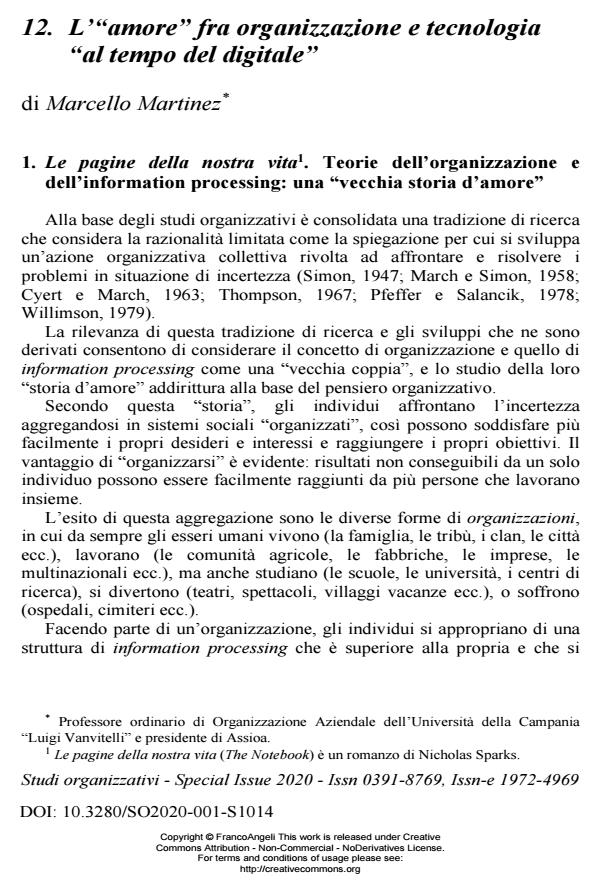L’"amore" fra organizzazione e tecnologia "al tempo del digitale"
Journal title STUDI ORGANIZZATIVI
Author/s Marcello Martinez
Publishing Year 2020 Issue 2020/suppl. 1
Language Italian Pages 9 P. 231-239 File size 213 KB
DOI 10.3280/SO2020-001-S1014
DOI is like a bar code for intellectual property: to have more infomation
click here

FrancoAngeli is member of Publishers International Linking Association, Inc (PILA), a not-for-profit association which run the CrossRef service enabling links to and from online scholarly content.
Marcello Martinez, L’"amore" fra organizzazione e tecnologia "al tempo del digitale" in "STUDI ORGANIZZATIVI " suppl. 1/2020, pp 231-239, DOI: 10.3280/SO2020-001-S1014